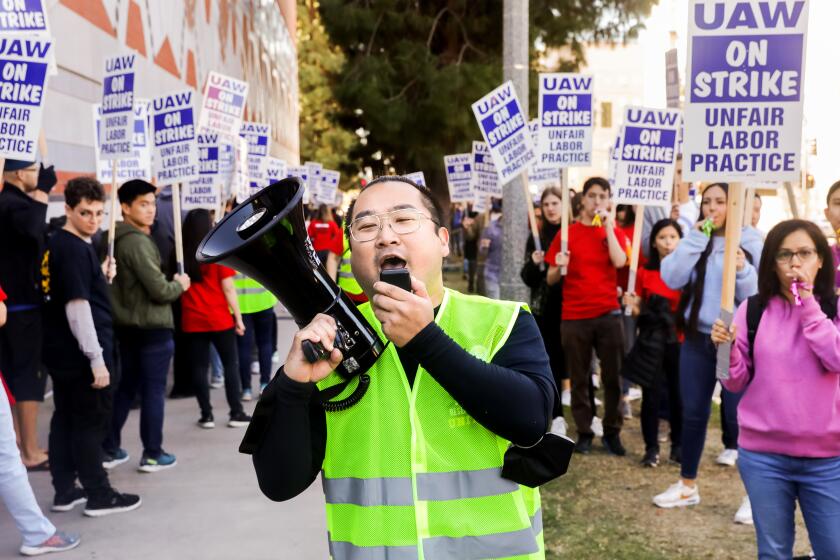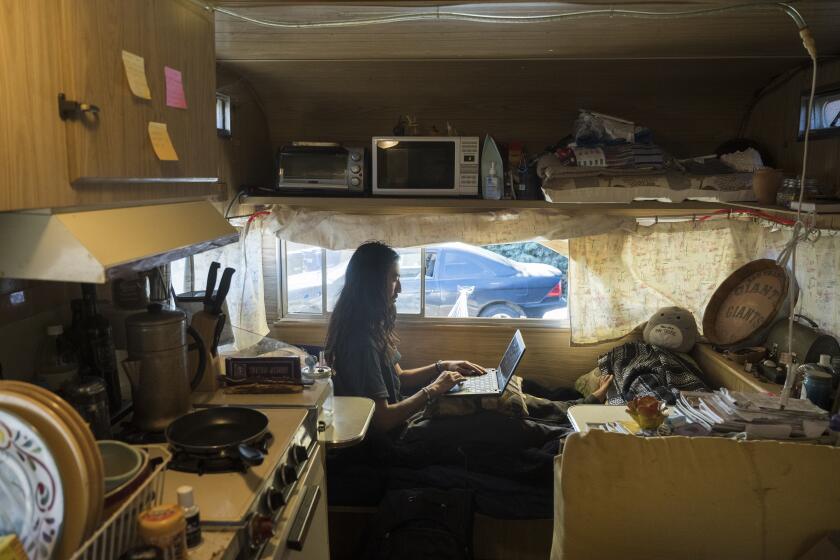Campus jobs are a lifeline for these CSU students. Some are looking to form a union
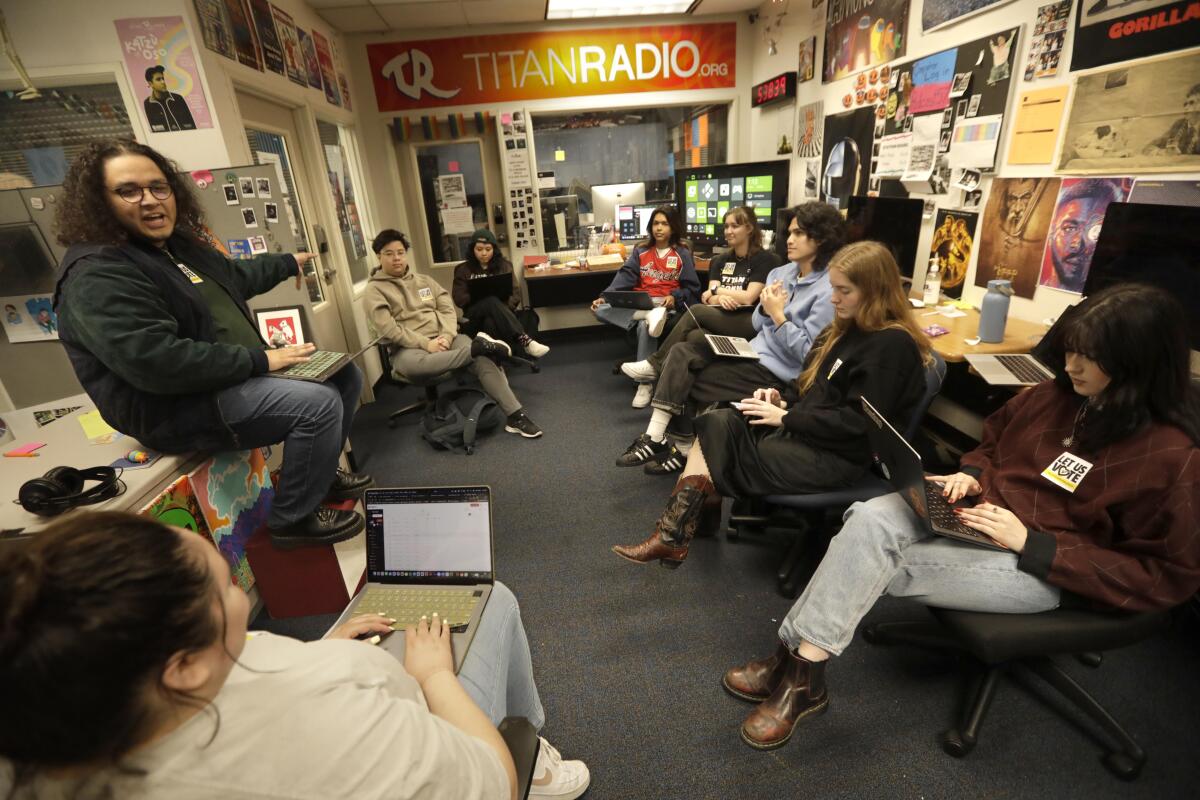
- Share via
Cameron Macedonio clocks 30 to 40 hours each week running Cal State Fullerton’s campus radio station, Titan Radio.
As general manager, he oversees a 12-person staff and dozens of disc jockeys for the 24-hour broadcast, at a salary of $15.50 an hour.
But the Cal State system only allows students to work 20 hours a week — so Macedonio doesn’t get compensated for much of the time he puts in.
“I’m pretty much on call at all times for the station,” said Macedonio, 20, a rising fourth-year journalism major.
Expanding students’ work hours is one issue, in addition to higher salaries and paid sick leave, that Macedonio hopes to address by forming a union. He is among more than 4,000 student assistants across CSU’s 23 campuses, working in jobs from IT support to receptionist, who submitted paperwork in April seeking to hold a vote on whether to unionize.
If the campaign is successful, the union would be the largest representing nonacademic undergraduate student employees in the country, according to the Cal State University Employees Union, which hopes to add the students to the more than 15,000 support staff already on its membership rolls.
For student workers, campus jobs are a lifeline that provides critical income. Faced with soaring costs for housing, groceries and other necessities, some students have been forced to supplement those jobs with other gigs off campus.
Racing from her last class of the day at Cal State Long Beach, Shellv Candler had about an hour to get to Wilmington.
The unionization push at Cal State follows other labor uprisings led by low-paid workers in education. Tens of thousands of academic workers at the University of California won wage increases and improved benefits after walking off the job for six weeks last year. In March, support staff won similar concessions from the Los Angeles Unified School District after a three-day strike.
A Cal State spokesperson said the system is committed to supporting students by connecting them to aid and offering programs that help with their basic needs.
“The CSU provides one of the most affordable college educations in the nation,” said Amy Bentley-Smith, the spokesperson. “The student assistant program is designed to supplement the affordability, but it is not designed to replace the need that some of our students have for full-time employment, including benefits.”
In April, Macedonio learned the Cal State Fullerton radio station had maxed out its budget — in part because students had logged too many hours. He and the other workers would not be paid for the last month of the semester.
Macedonio, who hopes to build a career in entertainment management or at a magazine, did not feel he could abandon his work at the station, which includes fielding calls late at night about technical questions or addressing small emergencies.
So he volunteered his time.
He’s grateful for the chance to develop his skills. But he also feels that the school benefits from his labor when it touts Titan Radio to prospective students.
Rising costs, more responsibilities
Balancing two or three jobs is common among student workers at Titan Radio, who shuffle in and out of the station’s office — a cozy space decorated with string lights and posters of musicians from Selena to Childish Gambino to Gorillaz.
Megan Teeling works up to 34 hours a week at the admissions desk of a children’s science museum in Santa Ana while also directing programming at the radio station. The 21-year-old saves on rent by living with family, but she pays her own car insurance and phone bill and contributes to utility payments.
“Between the two jobs, I’m definitely full-time,” she said before hurrying off to an unpaid internship required for her major in child and adolescent development.
The financial insecurity created extra stress for 26-year-old Sirena Salas, whose main source of income was her job as technical director of Titan Radio. After she learned she could not get paid for the last weeks of the semester, she dipped into savings and skimped on meals.
“I’m just living in a constant state of being nervous that the rug is going to get pulled out from me,” said Salas, who graduated last month.
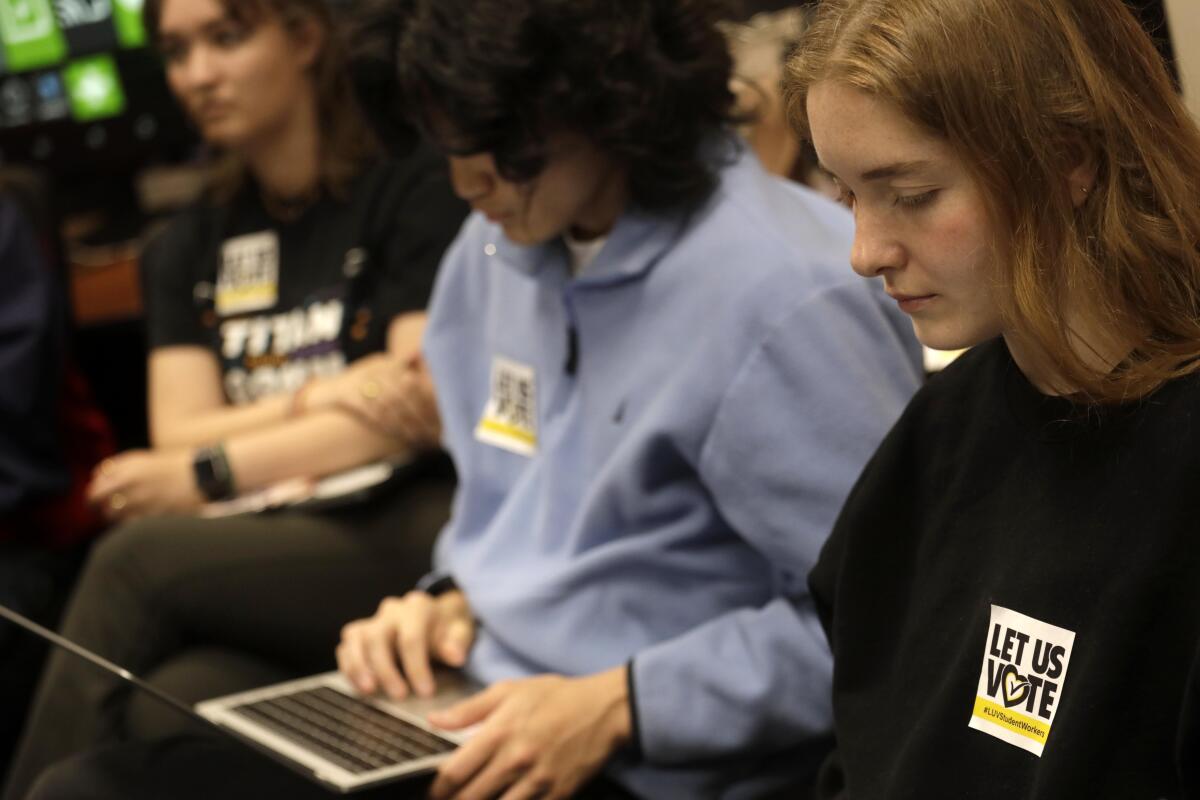
In 13 hours a week as the station’s communications and outreach director, Brandon Walkley didn’t make enough to cover all his expenses. So he picked up 20 to 30 hours a week as a cashier at Target.
The money he earned went toward his monthly $610 rent and $380 car payment, along with other living expenses.
Finances in Walkley’s family became tight after his mother was diagnosed with breast cancer, forcing her to leave her job as an oncology nurse.
“If I can support myself, I would like to do that,” said Walkley, who also graduated last month. “It’s very hard for them.”
‘If the UC students can do it, then why can’t we?’
Union organizers say they are inspired by last year’s UC strike, which included graduate teaching assistants and researchers and led to massive disruption in the crucial final stretch of the academic session.
“It was just the solidarity of so many people across all of California,” said Grayce Honsa, a political science and women’s studies major at San Diego State University. “If the UC students can do it, then why can’t we?”
About 48,000 unionized academic workers across the University of California’s 10 campuses walked off the job, calling for better pay and benefits.
It often doesn’t take much to convince student workers to unionize, they said — “It’s overall not feeling supported by CSU as a system.”
Support for organized labor in the U.S. is at an all-time high, according to a Gallup poll published last year. Young people have led recent high-profile unionization drives, fueling efforts at Starbucks locations and an Amazon warehouse in Staten Island.
Unions for students engaged in academic work as teaching assistants or researchers, like the UC unions that went on strike, are not uncommon. At Cal State, these students are represented by the United Auto Workers.
Student workers in nonacademic positions — many of them undergraduates — have increasingly sought to unionize at campuses across the country.
At Dartmouth, students who work in campus dining halls led a successful union campaign last year. Shortly after, students at Grinnell College in Iowa expanded a union for dining workers to all hourly student workers.
Most CSU dining halls contract their jobs to outside agencies, and those workers would not be eligible to join the new union, according to the California State University Employees Union.
Danielle Mahones, director of the leadership development program at the UC Berkeley Labor Center, said working-class students have always relied on campus jobs to get through school. But students now are coming of age as more people are struggling financially and as rent and other costs have soared.
That’s especially true at Cal State, which educates nearly 458,000 students as the nation’s largest four-year public higher education system. Nearly one-third of students are the first in their families to attend college and about half receive Pell Grants — federal money given to those who demonstrate exceptional financial need.
“Sometimes there’s this assumption that, ‘Oh, college kids are being supported by their parents,’” Mahones said. “But that’s not always the case.”
Some student workers perform roles similar to those of full-time employees who receive higher pay and benefits, including sick leave, according to the Cal State University Employees Union.
Catherine Hutchinson works alongside student workers as a biology technician at Cal State University Channel Islands.
“They truly are essentially a carbon copy of me while I’m doing my job,” said Hutchinson, the union’s president. “But they don’t get the same protections as us.”
As most University of California campuses start classes this month, the acute shortage of affordable housing is pushing many students into desperation, including living in trailers or working multiple jobs to cover high rents.
Without paid sick leave, Joshua Little felt he had no other choice but to show up for his IT support job at Chico State University when he got strep throat in February.
“I’m already running on a margin of basically zero,” said Little, who graduated last month. “I straight up couldn’t afford to do that.”
Lessons in organizing
Over the next several months, the California Public Employment Relations Board will determine whether union organizers fulfilled the requirement that at least 30% of eligible workers signed cards requesting a unionization vote.
Cal State employed about 19,500 student assistants in March, a university spokesperson told The Times. That would bring the 30% threshold to 5,850, leaving the organizers short with their roughly 4,000 signatures.
The organizers said the university had not shared staffing figures until recently, making the campaign more difficult. The positions the university included on its list of eligible workers will be a point of contention going forward.
Cal State officials have the power to bypass the process and voluntarily allow a vote but have thus far signaled no intent to do so.
Assemblymember Ash Kalra (D-San Jose) and Sen. Dave Cortese (D-San Jose) have written to interim CSU Chancellor Jolene Koester and Wenda Fong, chair of the system’s board of trustees, urging them to “quickly enter into an election agreement.”
“We know many concerns have been raised about housing insecurity of these students,” the letter said. “We need to ensure they can achieve fair compensation as one tool to support student access to housing.”
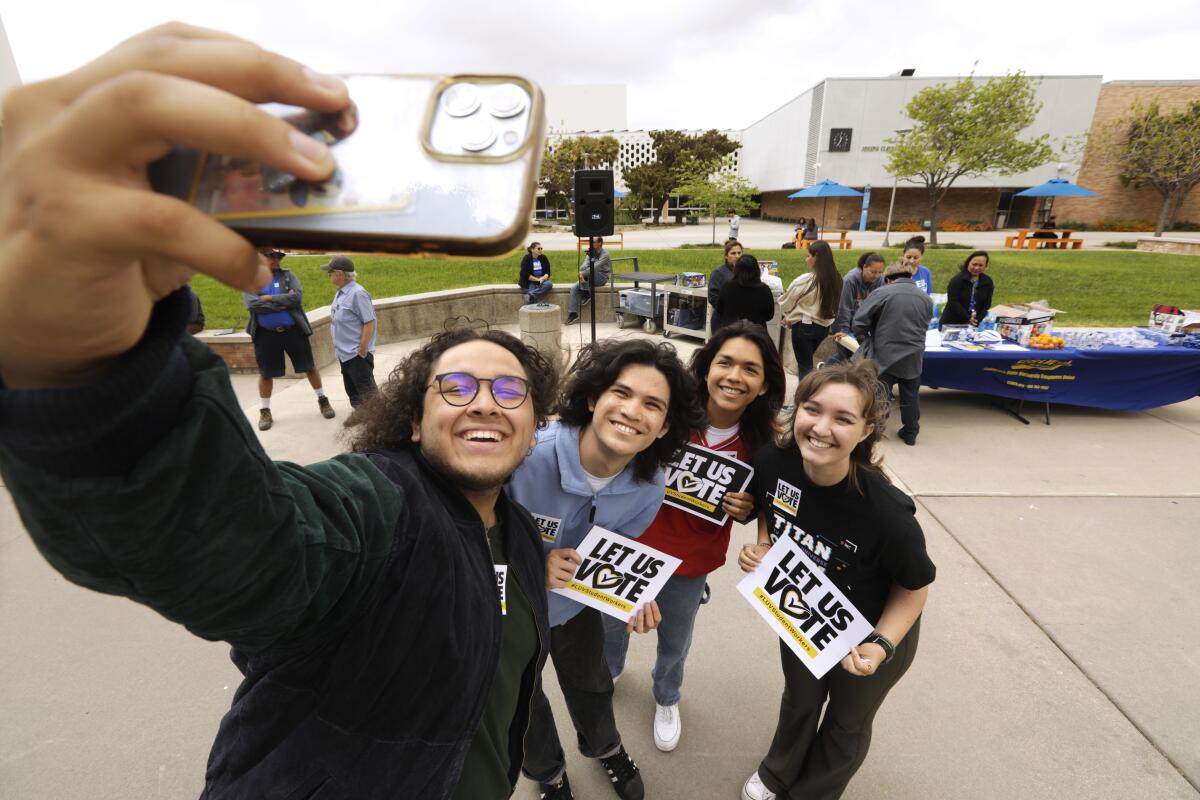
As he waits for the board’s decision, Macedonio plans to continue educating other students about the union drive.
He struggles to keep at least $100 in his checking account, relying on a credit card to tide him over between paychecks.
“We grew up not being able to live in a world we wanted,” he said. “I want to be able to try to help people live in the world they want.”
More to Read
Sign up for Essential California
The most important California stories and recommendations in your inbox every morning.
You may occasionally receive promotional content from the Los Angeles Times.
